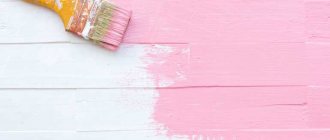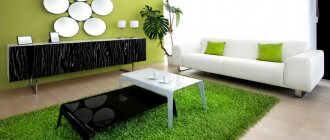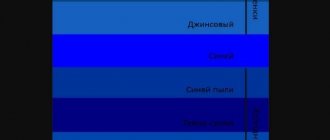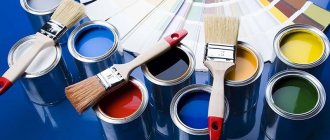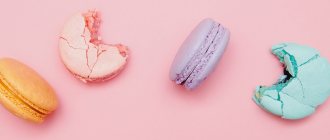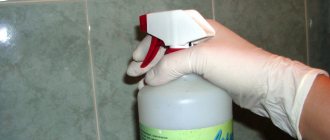Pearlescent paints for walls
This wall paint gives an interesting pearly shine and is suitable for painting many surfaces and even furniture elements. What component provides this shade?
What provides this shade?
The iridescent glow effect occurs due to the refraction of pearlescent light, which consists of glass and mica. Using natural mica, opaque mother-of-pearl is obtained. When using artificial it is translucent, and when using glass it is transparent.
- Pigments consist of microscopic granules or plates and have gloss and brightness. They are used to create visual depth.
- For a metallic shine, use aluminum or bronze powder.
- Particle size and application layer affect the shade.
- Pearl paint has three basic colors: gold, silver and pearl.
Relevance
Mother-of-pearl coating has a wide range of uses, used for interior decoration, furniture and decorative elements. It’s easy to create unique interiors, experiment and get effects with varying shine and shimmer with mother-of-pearl.
Application
The material is versatile and easy to use. It is applied for:
- wood;
- glass;
- concrete;
- drywall;
- DPS and other lumber.
Combinations
The material is compatible with many coatings:
- You can use any type of paint together: alkyd, oil or water-based;
- when covering wooden surfaces, it is better to add pigment to a wax or plaster mixture;
- When painting, ready-made solutions are used.
Primary and secondary colors
The classification of colors is as follows.
Basic:
- Blue;
- Red;
- Yellow.
Minor:
- Violet;
- Green;
- Orange.
Once you manage to mix colors, it becomes noticeable that the possibilities are not limited solely to new colors, there are also a variety of shades, tones and halftones. However, mixing colors does not always have predictable consequences. First of all, due to the fact that mixable paints have compositions that include a mixture of base product and pigment. So, the base, which can be oil, aniline or acrylic, affects the final result. Accordingly, the type of base will influence the shades obtained.
The type of base will affect the shades you get.
How to apply
The application process does not require special devices. You can work with the same tools that are used when painting with acrylic composition.
Sponge
Using a foam sponge it is convenient to create ornaments, designs and designs.
It is more suitable for decorating surfaces rather than for complete painting. The sponge is dipped into the composition and applied to the surface using pressure or circular movements. After each use, the sponge is freed from excess mixture by pressing on a sheet of paper or cardboard.
Brush
A brush is used to paint some elements or fragments. Mainly for decorative purposes. Fill the required space by touching the surface. You can use the technique of two round brushes with different shades of paint and apply simultaneously with chaotic movements.
Spray gun
A convenient way to apply paint with an even layer. The main thing when using a spray gun is to bring the paint to the consistency of sour cream.
Roller
It is convenient to work with a roller; it is the main tool. The coating applies evenly and economically. With it you can make clear boundaries. It is better to use a fur roller with thin, short pile. Apply the paint with straight or cross-shaped movements in two layers.
Brush
The brush is suitable for painting hard-to-reach places and corners.
But not for a large surface. Painting a large area with a brush is inconvenient, and more material is wasted.
A brush with soft bristles is suitable for dense coloring; a synthetic brush (for creating patterns) is applied with cross-shaped or straight movements.
How to make brown from plasticine?
Modeling of various figures and figurines, as a rule, involves the use of material of three or more shades. In this case, a situation very often arises when plasticine of the desired color is not at hand. And although in some cases it can be replaced with another shade, sometimes such replacements are unacceptable. However, do not be upset, because by mixing different colors you can always get the desired shade.
Thus, very often the modeling of various products requires the use of a brown mass. But how to make brown plasticine if it is not at hand, and replacing it with another color is unacceptable? In such a situation, red, yellow and black material will come to the rescue, which must be taken in a ratio of 1: 3: 1, respectively, and mixed very thoroughly. That's all, the brown mass is ready and can be used for modeling.
In order for the composition obtained after mixing to have a uniform color, it is necessary to follow several simple rules, namely:
- Before mixing, knead each piece of the future homogeneous mass well;
- roll them into one thin and long roll;
- Fold the resulting roller in half and roll it out again;
- repeat the procedure until a uniform color is obtained.
You can also create a brown modeling mixture by mixing purple with yellow (yellowish-brown) and green and red (reddish-brown). And how to make brown look at the photo
How to do the work yourself
The very first thing to do is prepare the surface:
- it is necessary to check the walls for defects and curvature;
- If any defects are found, correct them: remove the old coating and putty the surface until smooth, knock off the old plaster, clean the protrusions;
- then remove dust and dirt and prime thoroughly;
- When the primer is dry, start painting.
To paint with pearlescent composition, follow the following procedure:
- stir the paint, can be diluted with water, no more than 15% of the total mass; The pearlescent composition can be tinted;
- with a narrow brush, apply a starting line under the baguettes, 5–10 cm wide. This is necessary for further work with a roller, so as not to stain the ceiling;
- Now you can apply the first layer - it is called the base or background. A velor roller is better suited for the job;
- Pour pearlescent paint into a painting tray and apply evenly to the surface using a roller;
- then leave everything until completely dry.
To create drawings and ornaments, you need to use tools, depending on the idea.
How to make a room pearly white
White color visually expands the space.
Pearlescent white color is universal and suitable for apartment design. But it should be borne in mind that this color emphasizes the unevenness and defects of the walls.
Therefore, you need to either properly prepare the surface, or choose walls that are smooth and without flaws.
For coating, you can use pearlescent paint or pearlescent plaster. The latter does not require perfect walls; with its help it is easy to hide imperfections. Application method is the same as with conventional paints.
Chameleon effect
Apartment design with a chameleon effect is popular. It is created using the pigment of the same name, which is added to the paint and changes its color under different viewing angles. It looks brightest on a dark base.
This effect visually smoothes out unevenness and looks interesting on convex parts.
Pink pearl
Mother-of-pearl paint with a pink pearl effect will add tenderness and romance to the interior.
Combines with many colors: white, gray, blue. “Dusty” shades are especially popular.
Application is just as easy.
Depending on the design, you can use a sponge, roller and other tools.
Classic white pearl
White pearls are suitable for the interior of a house or apartment. Noble shine and shimmer gives the interior chic and luxury.
Before applying, you need to prepare the surface, because this shade emphasizes unevenness and imperfections.
If desired, the design can be placed using a stencil or roller.
Paint is applied in the usual way.
Mother-of-pearl paints have a wide range of palettes; they can be used to create an imitation of velvet, velor, granite, sea surface, and silk.
The working process
By mixing several different colors, you can get a large number of different shades. Which ones?
Shades of Gray
Quite often used in interior decoration. They help create shadow or unobtrusive color, as well as:
- You can create a regular gray by mixing black and white.
- To create cool shades, you need to add a little green to gray, and ocher for warm shades.
- Grey-green is gray with white and green.
- Gray-blue - gray, white and a little blue.
- Dark gray is the result of mixing gray and black.
Brown tones
To get a rich brown dye, you need to mix:
- green with red;
- red with blue and yellow;
- red with white, black and yellow.
How to create other original tones:
- You can get mustard if you add red, green and black dyes to yellow paint.
- Tobacco shade is red, green, yellow and white.
- Golden brown is the result of a combination of yellow, red, green, white and blue. In this case, there should be more yellow pigment.
Red tones
- The basis for the pink shade is considered to be white. Red is added to it. The brighter the desired shade, the more red you should add.
- To get a rich chestnut color, you need to mix red and black.
- Bright red-orange color - red and a little yellow. The more of the latter, the paler the result will be.
- You can give the dye a purple tint by mixing a few drops of bright blue and yellow colors and red pigment.
- To create raspberry, according to the recipe, you need to mix bright red + white + brown + blue. The more white, the pinker the hue.
Green tones
Deep green color is formed by combining yellow and blue tones. The saturation of the finished dye depends on the amount of each of them. To create shades, you need to add other colors to green:
- For mint you will need white.
- To obtain an olive color you need green and a few drops of yellow.
- The shade of grass can be obtained by mixing green with blue. Yellow paint will help to even out the color.
- The color of the needles is the result of mixing green with black and yellow.
- Gradually mixing green with white and yellow, you can create an emerald tone.
Violet tones
Purple is made by mixing blue and red. You can also use blue and pink paints - the final color will be light, pastel. To darken the finished tone, artists use black paint, which is added in very small portions. Here are the nuances for creating shades of purple:
- for light purple, you can dilute the finished color with white in the required ratio;
- For purple, you need to add more red paint than blue.
Orange color
When creating classic orange, combine one part of yellow and red paint. But for many types of paint you have to use more yellow, otherwise the color will turn out too dark. Here are the main shades of orange and how to get them:
- for light orange use pink and yellow, you can also add a little white paint;
- for coral, dark orange, pink, and white are required in equal proportions;
- for peach you need colors such as orange, yellow, pink, white;
- for red, you need to take dark orange and a little brown.
Pearlescent paint for walls: learning to choose and apply
In search of unusual ways to decorate walls, many consider types of paints that are relatively rarely used in decoration. And today we will talk about one of these paints - pearlescent. There are always fans of this visual effect, and they ensure constant demand for this type of finishing material. In this article we will talk about the advantages of this finishing method, as well as the nuances of working with paint. In addition, we will talk about what can be added to the enamel to get a pearlescent effect.
Pigments are the basis of pearlescent paint
Unusual effects of light refraction, causing the surface to characteristically shimmer with all the colors of the rainbow - this is why we love mother-of-pearl. This material is based on material extracted from oysters. We are, of course, not talking about pearls, but about shells. However, this material is extremely expensive for paint, and it is mainly used in cosmetics. The creators of the finishing material decided to go a different route and used mica and glass, which allows them to achieve different levels of transparency.
- Glass – complete transparency;
- Artificial mica – translucent;
- Natural mica is an ordinary opaque mother of pearl.
Important! Particle size greatly affects the paint's ability to cover and shine on a surface. Small particles cover the surface better, but larger ones shine better due to more noticeable refraction of light.
What can be added to enamel to get a pearl effect?
If it's all about the pigment, then it is quite obvious that in addition to ready-to-use pearlescent paint, its component itself is also available for sale. By adding it to any paint you can get the same effect.
What shades of crimson exist?
Raspberry is generally considered feminine, and by and large it is.
It is mainly used by women (in interiors, clothing, cosmetics, accessories, etc.); among men this tone is practically not in demand.
This color is considered a symbol of love and passion. He attracts attention and even sometimes “makes a challenge.”
However, you should not overdo it with it, this will lead to rejection of the tone as such, and from an attractive shade it will turn into inappropriate absurdity.
What is an advantage and expands the scope of its use is that crimson is presented in a varied palette of tones (from bright and catchy, to pale and even dark).
You can also mix raspberry with others and get completely different shades with only a slight hint of “raspberry”.
The most sought-after and popular shades of crimson among consumers, designers and people of creative professions are:
- Geraldine.
- Indian red.
- Frez.
- Shades of coral.
- Dark pink.
- Cardinal.
- Carmine red.
- Alizarin.
Nuances of color selection
Paints can have other visual effects besides mother-of-pearl. Dyes are produced by depositing mica particles on titanium or iron oxides. The addition of aluminum or bronze powder allows you to obtain the characteristic shine of metal.
Typically, such paint is sold only in three basic shades - silver, gold and pearl. You can get different shades either independently or by contacting specialists. The latter is relevant when it is necessary to tint several cans to paint a large surface, in order to eliminate even the slightest differences in shades, which are not uncommon when tinting yourself.
Mix colors to get a light beige shade
You will need to provide yourself with a certain set of basic colors. Combining them correctly will result in a light beige shade that you can paint with. The colors are as follows:
By gradually adding each color, they are all combined on a tablet or palette. If cardboard is used instead, it should be white so that, ultimately, the artist understands what color the result is.
How to mix? Scarlet, sunny and heavenly paints are combined in equal parts with a brush. Before dipping your brush into the next shade, you should clean it in a container of water. This combination will form the basis of the future shade. A dark shade should form on the palette - this indicates proper mixing. Next, the artist will lighten it.
To obtain a light beige shade, notes of snow-white and sunny are introduced into the already obtained mixture. Adding more yellow will provide a warm color, but the light color can be brought out if you add white. With each new addition, the original composition is mixed, the portions of the new shade should be scanty.
Advantages and disadvantages of pearlescent paint
- Versatility of use. The composition can be used for painting not only walls, but also ceilings, as well as various surfaces;
- Completely environmentally friendly. The pigments in the paint base are safe for health. But this is not the same as ready-made compositions, especially if you added pigment to an initially unsafe alkyd paint;
- Water-based pearlescent paint is diluted with water, has no odor and hardens quickly;
- High adhesion allows you to coat various materials with a reliable layer;
- Durability. High-quality pearlescent paint does not crack, does not fade in the sun and is not afraid of external influences. It’s easy to keep an eye on it and keep the walls clean.
We prepare the car and select materials for painting
You need to prepare the body in the same way as for regular painting. You can understand this issue in detail on our website. Preparation consists of high-quality body cleaning, grinding, and degreasing. If the current paint layer has cracks or depressions, then this must be corrected before painting with a primer. Most motorists are familiar with this process from doing chores in their home, office or apartment.
It is advisable to carry out grinding with a grinding machine, because the work will be completed faster, and the chance that you will miss some area is minimal. This list of work must be carried out in a clean and dry room, preferably with ventilation. Protective elements in the form of gloves and long sleeves are not only desirable, but necessary, since mother-of-pearl should not get into the skin.
There are several ways to apply mother-of-pearl to a car body. Probably the most common method is to paint the body with a consistent increase in the iridescent effect. An additional layer of varnish enhances the shine. The driver purchases a paste of a certain color already with mother-of-pearl. For knowledgeable people, another method is suitable - mixing pearlescent pigment with several pastes. It looks like an alchemical experiment, but the driver can prepare original paint by mixing several colors.
How to apply pearlescent paint to walls
Surface preparation
It is carried out according to standard schemes for any painting: the wall or ceiling must be leveled, cleaned of dirt and dust, degreased and primed. In this case, it is better to choose special primers from the same manufacturer for pearlescent paint. Sometimes, before applying the composition, the wall is covered with base paint. Study the manufacturer's proposal and find ways to enhance the durability of the coating and its visual effect.
Tool selection
- Brush. Using it over large areas is inconvenient and irrational. In addition to the high consumption of material and stains, applying paint with a brush also takes a lot of time and effort. But when painting corners, small areas or places with complex terrain, a brush is indispensable;
- Roller. The main tool in painting not only with pearlescent, but also with any other paint. Allows you to quickly and evenly cover large areas of walls or ceilings. At the same time, you need to work with it near the joints with caution, painting the very edges with a brush. It is best to choose tools with short pile and high-quality fur;
- Sponge. It is no longer used as a coloring agent, but as a decoration tool. Allows you to leave interesting patterns and textures on the wall, bringing to life various design solutions;
- Spray gun. If you need to paint large areas, you can consider the option of using a spray gun. We have already described the operating features and advantages of the latter in one of the previous articles.
Important! When using a spray gun, the pearlescent composition must be diluted. It is better to choose water-dispersed options, since they can be diluted with ordinary water. The latter can be up to 40 percent. You should not overdo it, as this will cause you to lose not only adhesion, but also the visual effect of the coloring.
Color options
Let's talk about concentration, which can be weak or strong. The first is preferable for painting the main surface area of the walls and ceiling. It is the choice of color that is important, and the faint pearl effect, which appears under certain lighting, gives it a unique visual appeal. Actually, in most cases we are talking about this method of applying the composition.
On the contrary, strong concentration brings to the fore the play of light reflected from the surface. It is not worth covering the main surface of the wall in this way, as the effect will be too pronounced and tiring. This approach is more used to highlight certain details.
Important! Ready-made compositions with a strong pearlescent effect are sold on the market, but it is much better to make them yourself, increasing the concentration of pearlescent pigment, sold separately.
Source
How to mix dyes based on your original hair color
Without a doubt, every woman knows the characteristics of her hair. How to get pure brown color taking into account the original shade? It's not as hard as it seems
You just need to take some features into account
For example, if your hair is fiery red, then you should choose paints containing matte pigments. Matte particles will muffle red tints, and when mixing classic chocolate with soft light brown, hair will acquire a pleasant, elegant and natural color.
If your hair is colored red, such as mahogany or stylish burgundy, then matte pigments will not be enough. The red tint is muted by cold pearlescent tones; when mixing, you should give preference to these colors.

